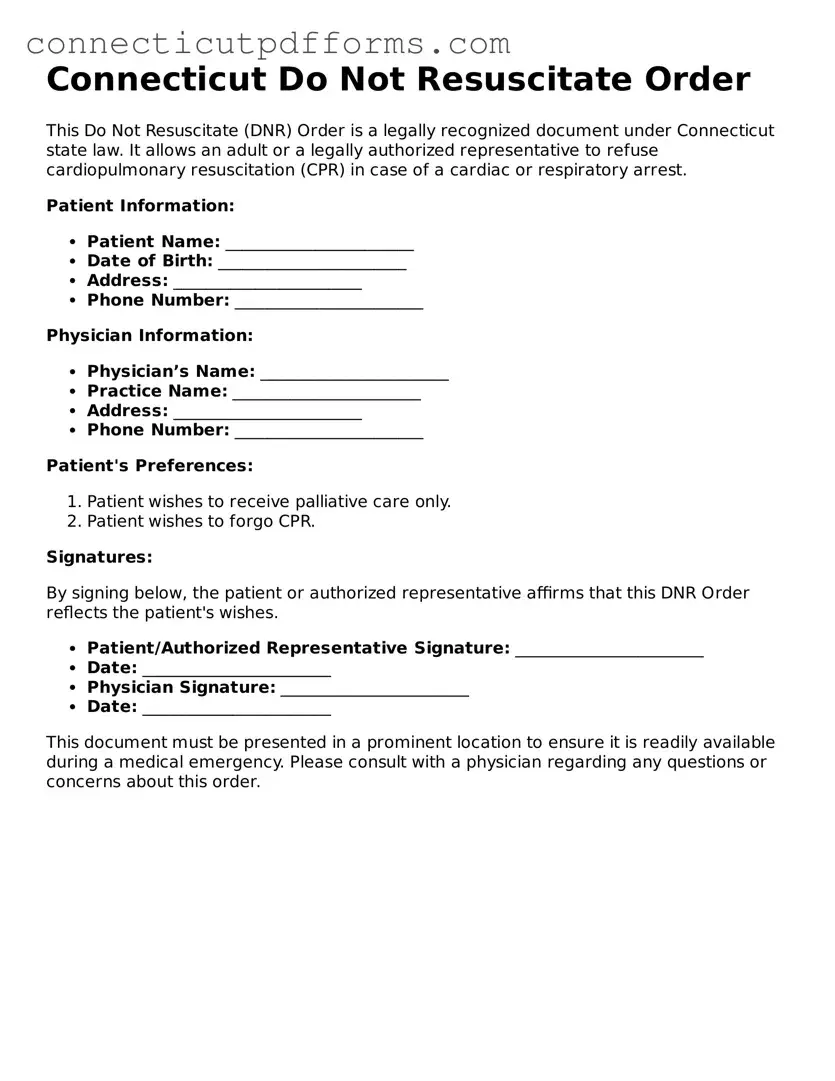Connecticut Do Not Resuscitate Order
This Do Not Resuscitate (DNR) Order is a legally recognized document under Connecticut state law. It allows an adult or a legally authorized representative to refuse cardiopulmonary resuscitation (CPR) in case of a cardiac or respiratory arrest.
Patient Information:
- Patient Name: _______________________
- Date of Birth: _______________________
- Address: _______________________
- Phone Number: _______________________
Physician Information:
- Physician’s Name: _______________________
- Practice Name: _______________________
- Address: _______________________
- Phone Number: _______________________
Patient's Preferences:
- Patient wishes to receive palliative care only.
- Patient wishes to forgo CPR.
Signatures:
By signing below, the patient or authorized representative affirms that this DNR Order reflects the patient's wishes.
- Patient/Authorized Representative Signature: _______________________
- Date: _______________________
- Physician Signature: _______________________
- Date: _______________________
This document must be presented in a prominent location to ensure it is readily available during a medical emergency. Please consult with a physician regarding any questions or concerns about this order.
